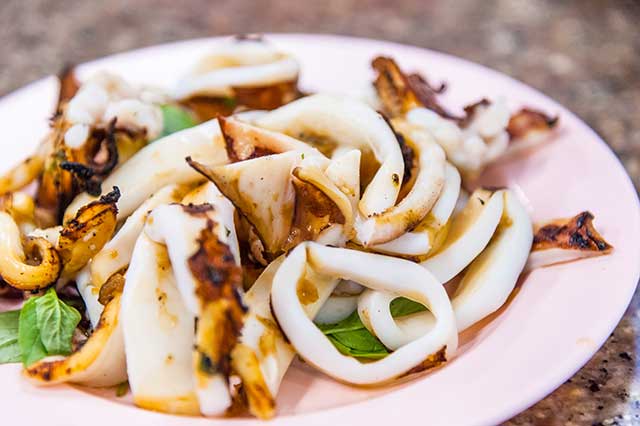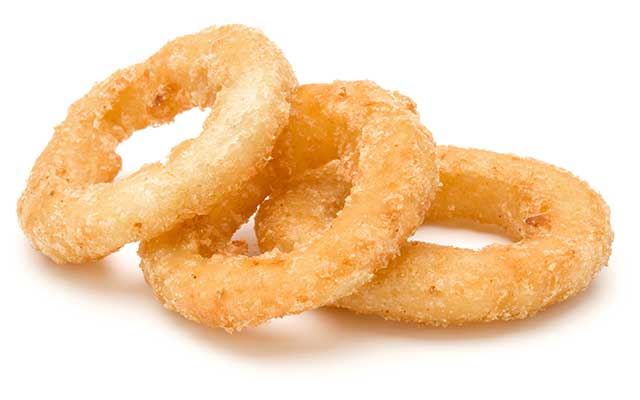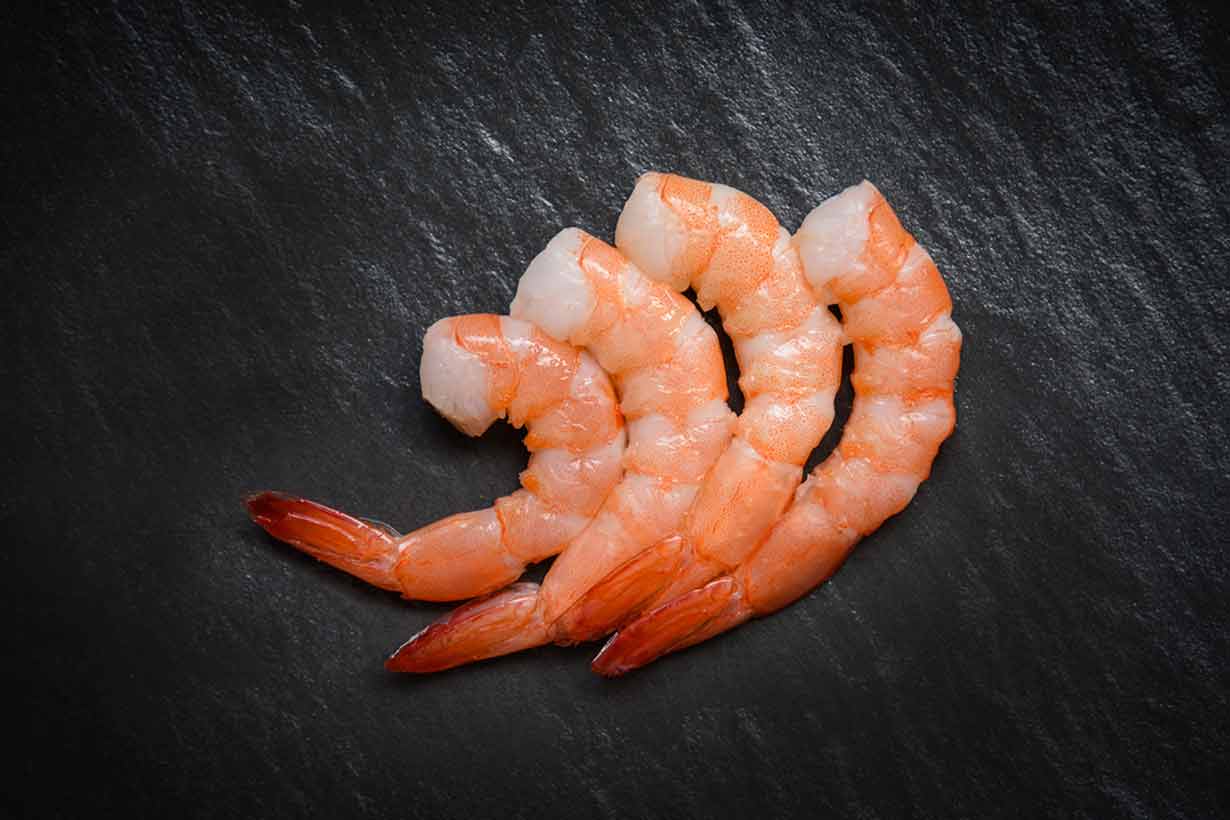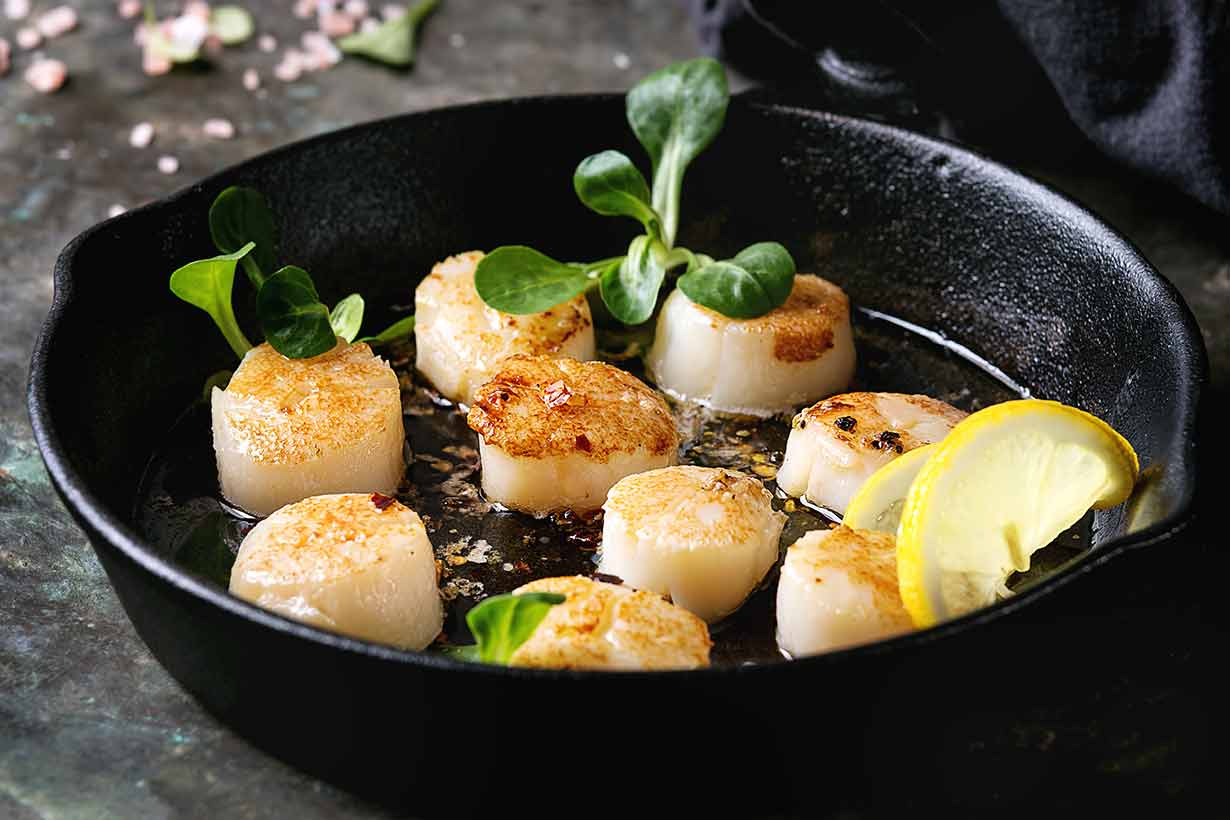Calamari is a popular variety of seafood, and it offers a range of nutritional benefits too.
This seafood plays a significant role in the Mediterranean and East Asian diet, and it also plays a part in North American and Western European cuisine.
In this article, we look at the potential benefits that calamari can provide.
Additionally, we examine the full nutrition profile and one or two potential concerns.
What Is Calamari?

As mentioned, calamari is the culinary name for squid, which is a type of mollusk that lives in oceans around the world.
Calamari is an excellent source of nutrients, and it is especially valued in Japanese cuisine.
In Japan, restaurants serve calamari in all kinds of different ways. These serving styles include sashimi, sushi, tempura (fried), grilled calamari, and more.
Dried calamari is also very popular in Korea, and the Mediterranean region is responsible for a range of braised and fried dishes.
In North America and Western Europe, fried calamari rings are the most popular way to serve this nutritious seafood.
Taste
Calamari is relatively mild.
The food has no strong taste, and it tends to absorb different flavors from whatever it is cooking alongside. For instance, calamari quickly absorbs strong flavors from ingredients like garlic, ginger, tomato, and herbs.
Calamari has a firm and chewy texture, and it is susceptible to over-cooking. After cooking for too long, calamari can take on a tough and rubbery texture.
Benefits of Calamari
Calamari has several benefits related to its strong nutrient profile.
1) A Good Source of Protein
Calamari is a rich source of protein, of which it provides 15.6 grams per 100 g serving (1).
Also, calamari is a complete protein, which means that it provides all nine of the essential amino acids in adequate amounts.
For those who are interested, the complete amino acid profile of calamari per 100 grams is below;
- Alanine: 0.94 g
- Arginine: 1.14 g
- Aspartic acid: 1.50 g
- Cystine: 0.20 g
- Glutamic acid: 2.12 g
- Glycine: 0.97 g
- Histidine: 0.30 g
- Isoleucine: 0.68 g
- Leucine: 1.10 g
- Lysine: 1.16 g
- Methionine: 0.35 g
- Phenylalanine: 0.56 g
- Proline: 0.64 g
- Serine: 0.70 g
- Threonine: 0.67 g
- Tryptophan: 0.17 g
- Tyrosine: 0.50 g
- Valine: 0.68 g
2) Calamari Offers Omega-3 Fatty Acids
Although oily fish such as salmon and mackerel are the best way to get omega-3, most seafood contains variable amounts of these essential fatty acids.
On this note, calamari offers 0.50 grams of omega-3 fatty acids per 100 grams, which is a reasonable serving (1).
Omega-3 plays numerous vital roles in the human body, and research suggests that it has anti-inflammatory properties which may lower the risk of several chronic diseases (2, 3).
Additionally, calamari contains almost no omega-6, which could be beneficial for those trying to maintain a better omega-6 to omega-3 ratio.
In this regard, some researchers believe that maintaining an evolutionary-appropriate omega-6 to 3 ratio may be important to human health (4).
3) Low In Mercury
In recent years, there have been persistent concerns about the purity of fish and seafood in general.
However, calamari appears to be one of the least-affected types of seafood from mercury contamination.
Based on mercury levels in commercial seafood between 1990 and 2012, the average mercury content of squid, based on 36 samples, was 0.024 PPM (5).
For more clarity on squid’s relative mercury concentration, the list below compares the mercury level of squid to other popular seafood choices;
- Albacore tuna: 0.350 PPM
- Cod: 0.111 PPM
- Crab: 0.065 PPM
- Herring: 0.078 PPM
- Lobster: 0.107 PPM
- Sardine: 0.013 PPM
- Shark: 0.979 PPM
- Squid: 0.024 PPM
- Trout: 0.071 PPM
As shown, squid has one of the lowest mercury concentrations out of all commercial seafood samples. In this particular example, squid contains lower amounts of mercury than all other seafood except for sardines.
4) Contains Choline
Choline is an essential vitamin-like nutrient that is particularly important for brain and liver health (6, 7).
While it can be challenging to get sufficient choline in our diet, some foods offer a good source of the nutrient.
Eggs are the best source of dietary choline, and one cooked egg provides approximately 117 mg of the nutrient (8).
However, squid is also an excellent source of choline and offers around 65 mg per 100-gram serving (9).
Unfortunately, most people in the United States have a suboptimal choline intake.
According to the National Health and Nutrition Examination Survey, only 10.8% of Americans meet the adequate intake (AI) recommendations for choline (10).
5) Rich In Selenium
Calamari contains high concentrations of selenium, which is an important mineral with antioxidant mechanisms.
In the human body, selenium activates various selenoproteins that can improve immune response and help to protect against multiple health issues (11, 12, 13).
Per 100-gram serving, calamari offers approximately 44.8 mcg of selenium, which is equivalent to 64% of the recommended daily intake (1).
6) Calamari Contains Significant Amounts of Copper
Copper is an essential mineral that plays a key role in bone health, the cardiovascular and nervous system, iron metabolism, and red blood cell formation (14).
Copper is also the most concentrated nutrient in calamari, and 100 grams provides 1.9 mg of the mineral, which is equal to 95% of the daily recommended intake (1).
7) Nutrient Density
As discussed so far, calamari offers a wide range of beneficial nutrients from protein and omega-3 to selenium and copper.
However, this popular seafood is also very nutrient-dense.
Nutrient density refers to the concentration of nutrients a specific food offers relative to its energy (calorie) density.
Since 100 grams of calamari offers all these nutrients for only 92 calories, it is very nutrient-rich.
Concerns and Drawbacks

No food is perfect, and all foods have benefits and drawbacks; calamari is no different in this regard.
Here is a quick overview of some potential concerns and drawbacks and what the research says about them.
Squid Allergy
Calamari is the culinary name for squid, which is a member of the mollusk family.
In other words; squid is a relative of shellfish like oysters, mussels, and clams.
On the negative side, squid can also cause allergic reactions in the same way that its mollusk relatives can (16).
One of the primary allergens in squid is a protein called 38 kd (17).
Allergy to crustacean species, such as crab, lobster, and shrimp is more prevalent than mollusk allergies. However, it is worth noting that there can be cross-reactive allergic reactions from squid in individuals with crustacean allergies (18, 19).
Allergic reactions can be severe, and anyone who suspects they may have a shellfish allergy should speak to their doctor before trying squid.
Cholesterol Content
Calamari is a large source of dietary cholesterol, with 100 grams containing 233 mg (1).
The cholesterol content of food has historically been a concern for its potential effect on cardiovascular health.
However, the 2015-2020 Dietary Guidelines For Americans relaxed the restrictions on dietary cholesterol for the first time (20). To quote the 2015-2020 guidelines directly; the prior recommendations to limit dietary cholesterol were not brought forward “because available evidence shows no appreciable relationship between consumption of dietary cholesterol and serum cholesterol” (21).
In other words; for most people, a higher intake of dietary cholesterol has relatively little impact on blood cholesterol levels.
That said, the 2020-2025 Dietary Guidelines do still advise that dietary cholesterol intake should be somewhat restricted. For instance, they state that “The National Academies recommends that trans fat and dietary cholesterol consumption to be as low as possible without compromising the nutritional adequacy of the diet” (22).
Meanwhile, the FDA have set an upper ‘daily value’ for dietary cholesterol, based on a 2000-calorie diet, of 300 mg per day (23).
300 mg is equivalent to approximately 130 grams of calamari.
Fried Calamari Is Not as Healthy
There are many different ways of preparing calamari, and many of these are very healthy.
For example, a Mediterranean calamari and seafood stew offers a lot of beneficial ingredients.
However, fried calamari is one of the more popular options in the Western world.
While this version may taste good, the addition of flour and cooking oil adds refined carbohydrates, oil, and lots of extra calories.
For health purposes, other methods of preparing calamari are preferable.
Calamari Nutrition Facts
For reference purposes, the following table shows the full nutrition profile for calamari per 100-gram serving (1).
| Calories/Macronutrient | Amount | |
|---|---|---|
| Calories | 92 kcal | |
| Carbohydrate | 3.08 g | |
| Fat | 1.38 g | |
| Saturated Fat | 0.36 g | |
| Monounsaturated Fat | 0.11 g | |
| Polyunsaturated Fat | 0.52 g | |
| Omega-3 Fatty Acids | 0.50 g | |
| Omega-6 Fatty Acids | 0.01 g | |
| Protein | 15.58 g | |
| Vitamin | Amount | % DV |
| Riboflavin (B2) | 0.41 mg | 24.2 % |
| Cobalamin (B12) | 1.30 mcg | 21.7 % |
| Choline | 65.0 mg | 11.8 % |
| Niacin (B3) | 2.18 mg | 10.9 % |
| Vitamin C | 4.70 mg | 7.8 % |
| Vitamin E | 1.20 mg | 6.0 % |
| Pantothenic Acid (B5) | 0.50 mg | 5.0 % |
| Pyridoxine (B6) | 0.06 mg | 2.8 % |
| Thiamin (B1) | 0.02 mg | 1.3 % |
| Folate | 5.0 mcg | 1.3 % |
| Vitamin A | 10 mcg RAE | 1.1 % |
| Mineral | Amount | % DV |
| Copper | 1.89 mg | 94.6 % |
| Selenium | 44.8 mcg | 64.0 % |
| Phosphorus | 221.0 mg | 22.1 % |
| Zinc | 1.53 mg | 10.2 % |
| Magnesium | 33.0 mg | 8.3 % |
| Potassium | 246.0 mg | 7.0 % |
| Iron | 0.68 mg | 3.8 % |
| Calcium | 32.0 mg | 3.2 % |
| Sodium | 44.0 mg | 1.8 % |
| Manganese | 0.04 mg | 1.8 % |
Final Thoughts
Calamari is a nutritious seafood option that provides an excellent source of protein and minerals for very few calories.
Additionally, calamari offers a decent amount of vitamins and omega-3, and there are few negative considerations aside from the rare risk of allergy.
Since calamari is also a tasty and versatile ingredient, this healthy seafood can offer a lot to the average diet.
For more on seafood, read this guide to abalone.








